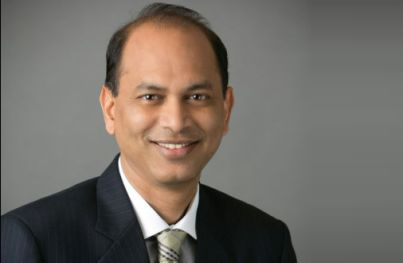Our focus is on long term wealth creation through a focus on quality businesses with scalable opportunities
BFSI Industry Interview

Sunil Singhania is CIO - Equity Investments at Reliance Mutual Fund. Sunil has a total experience of over 24 years in equity markets and has been managing funds at Reliance Mutual Fund since 2003. Presently Sunil oversees domestic Equity assets of approx. Rs 50,000 crs and personally manages the flagship fund – Reliance Growth and other key offerings like Reliance Diversified Power sector, Mid & Small Cap and Small Cap fund. Sunil also manages assets worth 50 million USD in the offshore Equity Offering Reliance Emergent India Fund.
Sunil Singhania is the first from India to be elected as the Director on the Global Board of Governors of CFA Institute, USA. Sunil was the Promoter of The Association of NSE Members of India; a body of stock brokers. He was a member on the Standards & Practice Council of the CFA Institute, USA, for 6 years, the first and only member so far based in India to do so. Sunil was the Founder of the Indian Association of Investment Professionals, the CFA India society and was its President for a continuous period of eight years. Having travelled extensively across the world, Sunil has attended many global investment conferences and seminars.
Before his association with Reliance Mutual Fund, Sunil gained considerable experience on the sell side in Indian equity markets. He was the President of Motisons Securities Private Limited, a broking firm that he was instrumental in setting up. Later he was a Director- Research and Institutional Sales at Advani Share Brokers Private Limited, a full service broking outfit specializing in Indian equity and catering to local and global fund houses. Sunil was the Promoter of The Association of NSE Members of India; a body of stock brokers.
Brexit did not seem to have major impact on Indian equity market, with the Nifty holding above 8,000. Have we seen the worst of Brexit as far as our market in concerned? What is the longer term implication of this event on Indian equities?
India’s dependency on the UK via the trade and FDI channel is very low. UK accounts for only 3.4% and 1.4% of India's merchandise exports and imports respectively, as of FY16. In addition, FDI flows from UK to India stood at only US$1bn in FY15 and US$0.8bn in FY16.
Thus given the limited direct impact of ‘Brexit’, Indian markets have been fairly resilient. Having said that real impact from a global perspective may unfold only over a period of time, while the impact appears to be limited from a domestic context, for the reasons outlined above.
On the positive side the scope for monetary easing has increased with a generalized global easing environment, which can lead to higher allocations by foreign investors to promising markets like India.
The US Federal Reserve did not raise interest rates in their last monetary policy announcement. With Brexit behind us when do you expect the Fed to increase interest rates? What will be the impact of the rate hike on Indian equities?
In light of the current global scenario it’s unlikely that US Federal Reserve may opt for any sharp increase in interest rates. However, from an economic perspective US has been reasonably stable and given the long period of lower rates in that country, there is a case for gradual reversal during the year.
We have witnessed over the past few years that market fears for an event for months and when the event actually unfolds, the reaction is in fact positive. This happened across events like fiscal cliff, QE tapering, Greece elections, Brexit etc. Hence in the event of US rate hike, we do not anticipate a significant impact on domestic equities.
What are the major global risks other than Brexit and US Fed actions that our equity market may face in the coming months?
Global variables have been very dynamic and the investment cycles are becoming much shorter, increasing the volatility. Chinese economic growth is an important factor to keep track of as any significant deterioration can result is Yuan devaluation which in turn can lead to a huge currency volatility. In the near term there are key elections/referendum in few EU countries and US Presidential elections which needs to be monitored. The results of these events can potentially lead to higher volatility especially wrt EU where possibly some more countries may adopt a UK like stance of exiting EU.
However, from a domestic perspective we believe improving domestic macros, policy reforms and the impending festive season along with a global easy liquidity environment, can cushion the likely impact of these global event based risks.
Do you see the Reserve Bank making more rate cuts this fiscal year? If yes, what is the quantum of cuts that you expect this year?
We expect RBI to lower policy rate by an additional 25 bps in FY17, provided the hi-frequency inflation numbers continue to undershoot RBI’s projections. Even as the inflation trajectory does look somewhat ominous in the next couple of months owing to both seasonal and structural factors, we see limited upside risks as Core inflation is likely to remain sticky around 4.5%-5%.
Having said that we think that policy stance will incrementally become more data-dependent and clarity on this will emerge only with the 7th Pay Commission implementation, effect of monsoon on the disinflationary path of inflation, and degree of volatility from global factors (esp. commodity prices).
Hopefully, we will have good monsoon this year. Please talk a little bit about the effect of good monsoon on the Indian equity market, especially industry sectors that are likely to benefit from good monsoon?
After a slow start, the south-west monsoon activity has picked up significant pace with the deficit reduced to just 4% currently. As per Met Department July and August may have above average rainfall and therefore the deficit will likely bridge in the coming weeks
The effect of normal monsoon (after two consecutive bad years) to revive rural demand cannot be underestimated. Good monsoon can benefit a lot of core economy sectors like agriculture, infrastructure apart from improving consumption especially the discretionary spending from a rural context.
Are there any near term risks of inflation creeping up again, good monsoon notwithstanding? What is your outlook on crude oil and other commodity prices?
Usually commodity cycles last longer and given the current global growth projections we do not anticipate any major change in the demand environment. Hence we expect the commodity prices including crude prices to remain range bound over the medium term. Further with commodities like crude, we have witnessed rapid improvements in efficiencies of vehicles etc. which along with reasonably high stock pile which will keep a check on a strong demand revival. However in the near term geo-political risks can lead some spike in commodities like oil.
On the inflation side assuming normal monsoon, lower capacity utilization and efficient food supply management, we do not anticipate a sharp rise in inflation in the near to medium term.
The 2015 – 2016 Q4 results showed some good signs relative to the previous quarters. Do you see an earnings recovery around the corner? When do you the see the capex cycle reviving in the economy?
The 4th quarter earnings season ended with optimism as number of corporates met or beaten expectations after several disappointing quarters. Adjusting for the financial sector write offs by banks for NPA’s overall earnings growth has been encouraging across most sectors. Many companies managed to control costs and improve margins in an environment where top line growth is scarce.
On the capex front we are witnessing some uptick in short cycle/replacement areas while the large scale capex is expected to happen with a lag. However, with a low base of earnings in the last few quarters, reported earnings growth is set to see a meaningful improvement in FY17.
Let us discuss the most talked about sector over the past year or so. In your view, have we seen the worst of the NPA and earnings issues with the banks, especially public sector banks?
We feel in the near term there can be some more pain on the asset quality front as the resolution is taking time, however one needs to watch key developments like deleveraging from stressed groups, benefits of MIP (Minimum Import Price) for the Steel sector, benefits to the SEB's due to UDAY and hence higher purchase of power from Power generating units, unclogging of the stuck up projects and the overall recovery in economy. Further the RBI and Govt. (through Bank Bureau) are working in a cohesive manner to reduce the stress while the recent measures like Banking reforms like Bankruptcy code, Strategic debt restricting scheme etc. can help in reducing the asset stress. All this can lead to a reduction in the asset quality problems.
While PSU Banks have their own challenges, the larger ones with strong CASA (%,) franchise and Balance sheet to withstand the pain of stress on their books along with some scope for value unlocking through sale of strategic investments are better placed than their peers.
We believe most of the negatives are being reflected in the current valuations and the top players in the sector, where we are focusing, are well equipped to manage the key concerns and participate meaningfully in the domestic recovery.
In the current market and economic environment, is your portfolio construction approach, top down or bottom up? If top down, which sectors do you like in the current environment with a three year investment horizon?
Our portfolio construction is mostly a blend of both the Top Down and Bottom Up investment approaches; however, the proportion may vary based on individual fund mandates. We are focused on domestic recovery themes which can benefit significantly from the expected India revival. Some of the focus themes are – Consumption (focus on urban spending – themes like Auto, Hospitality, Media), Financial Services and Capex (focus on short cycle or replacement space- themes like Engineering, Power T &D). From a diversification perspective we also have selective exposures to secular or counter cyclical themes like Healthcare, Oil & Gas and Software.
Over the past year or so, we have seen midcap outperforming large cap. Do you expect this trend to continue over the next 2 – 3 years? Both your large cap fund, Reliance Top 200 Fund and your multicap fund, Reliance Equity Opportunities Fund have done exceedingly well in the last three years. What will be your advice to our readers looking to invest in equities with three-year investment horizon, with respect to market cap categories?
Large cap market valuationsare reasonable given the low base of earnings and the cyclical recovery which can unfold over a period of time. From a valuation perspective at the current juncture large caps appear attractive on a relative basis. However, good quality mid & small cap stocks with established track record offers attractive investment opportunities for long term investors.
Thus investors with investment horizon of 2 – 3 years can consider Large cap oriented or multicap offerings while investors with longer time horizon can also have some allocations to Mid/Small cap space as per their risk profile.
Finally, we would like to get your views on growth versus value style of investing. Different fund managers have different views on this. As an AMC, do you have preference either ways?
Our core investment philosophy is GARP or ‘Growth at Reasonable Prices’. The attempt is to identify and invest in Businesses with significant growth opportunity available at rational prices, commensurate with the growth potential. Our philosophy empowers us to take differentiated high conviction allocation s which can create significant long term alpha for the investors.
Hence the focus is on long term wealth creation through a focus on quality businesses with scalable opportunities available at reasonable valuations.
Recent Interviews
-
Partner Connect by Advisorkhoj with Mr Amit Kalra Glorious Path Pvt Ltd New Delhi
Dec 5, 2025
-
Partner Connect by Advisorkhoj with Mr Alok Dubey PrimeWealth Pune
Dec 1, 2025
-
In Conversation by Advisorkhoj with Ms Aparna Shanker Chief Investment Officer Equity The Wealth Company Mutual Fund
Nov 28, 2025
-
In Conversation by Advisorkhoj with Mr Sanjay Bembalkar Head Equity Union MF
Nov 28, 2025
-
In Conversation by Advisorkhoj with Mr Arjun Khanna Equity Fund Manager Kotak Mutual Fund
Nov 17, 2025
Fund News
-
Zerodha Mutual Fund launches Zerodha Nifty Short Duration G Sec Index Fund
Dec 26, 2025 by Advisorkhoj Team
-
Groww Mutual Fund launches Groww Nifty Chemicals ETF
Dec 26, 2025 by Advisorkhoj Team
-
DSP Mutual Fund launches DSP Nifty Next 50 ETF
Dec 19, 2025 by Advisorkhoj Team
-
DSP Mutual Fund launches DSP Nifty 500 Index Fund
Dec 19, 2025 by Advisorkhoj Team
-
Kotak Mahindra Mutual Fund launches Kotak Nifty Next 50 ETF
Dec 18, 2025 by Advisorkhoj Team





